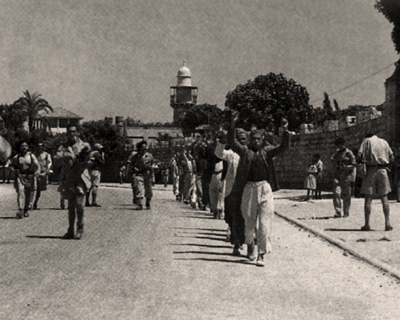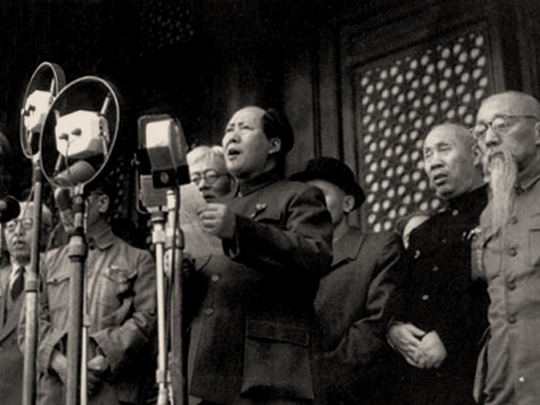Wikimedia Commons / CC-BY-SA-3.0 / GFDL
1 – The Communist People’s Republic of China Formally Proclaimed by Chairman Mao Zedong
Following the Chinese Civil War and the victory of Mao Zedong’s Communist forces over the Kuomintang forces of Generalissimo Chiang Kai-shek, who fled to Taiwan, Mao declared the founding of the People’s Republic of China on October 1, 1949.
Mao’s first goal was a total overhaul of the land ownership system and extensive land reforms.
China’s old system of landlord ownership of farmland and tenant peasants was replaced with a distribution system in favor of poor/landless peasants.
Mao laid heavy theoretical emphasis on class struggle, and in 1953 began various campaigns to persecute former landlords and merchants, including the execution of more powerful landlords.
Drug trafficking in the country, as well as foreign investment, were largely wiped out.
Many buildings of historical and cultural significance, as well as countless artifacts, were destroyed, as they were considered reminders of the “feudal” past.
2 – Arab-Israeli War Ends

On 15 May 1948, the ongoing civil war transformed into an inter-state conflict between Israel and the Arab states, following the Israeli Declaration of Independence the previous day.
A combined invasion by Egypt, Jordan, and Syria, together with expeditionary forces from Iraq, entered Palestine. The invading forces took control of the Arab areas and immediately attacked Israeli forces and several Jewish settlements.
The 10 months of fighting, interrupted by several truce periods, took place mostly on the former territory of the British Mandate and for a short time also in the Sinai Peninsula and southern Lebanon.
In 1949, Israel signed separate armistices with Egypt on 24 February, Lebanon on 23 March, Jordan on 3 April, and Syria on 20 July. Israel occupied territories of about one-third more than was allocated to the Jewish State under the UN partition proposal.
After the armistices, Israel had control over 78% of the territory comprising former Mandatory Palestine. The conflict triggered significant demographic change throughout the Middle East.
Around 700,000 Palestinian Arabs fled or were expelled from their homes and they became Palestinian refugees in what they refer to as Al-Nakba (“the catastrophe”).
In the following three years, about 700,000 Jews immigrated to Israel, with many having been expelled from their previous countries of residence in the Middle East.
3 – Twelve Nations Sign the North Atlantic Treaty Establishing NATO

NATO is an intergovernmental military alliance based on the North Atlantic Treaty, which was signed on 4 April 1949.
It is comprised of 28 member states across North America and Europe.
The organization constitutes a system of collective defense whereby its member states agree to mutual defense in response to an attack by any external party. NATO’s headquarters are located in Haren, Brussels, Belgium.
An additional 22 countries participate in NATO’s Partnership for Peace program, with 15 other countries involved in institutionalized dialogue programs. Members’ defense spending is supposed to amount to 2 percent of GDP.
NATO was little more than a political association until the Korean War galvanized the organization’s member states, and an integrated military structure was built up under the direction of two US supreme commanders.
After the fall of the Berlin Wall in 1989, it was drawn into the breakup of Yugoslavia, and conducted its first military interventions in Bosnia from 1992 to 1995 and later Yugoslavia in 1999.
Article 5 of the North Atlantic treaty, requiring member states to come to the aid of any member state subject to an armed attack, was invoked for the first and only time after the September 11, 2001, attacks, after which troops were deployed to Afghanistan under the NATO-led ISAF.
